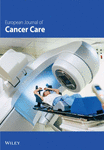The long-term psychosocial effects of haematopoetic stem cell transplantation
Abstract
The purpose of this study was to identify long-term psychosocial effects of allogenic, syngenic and autologous haematopoetic stem cell transplantation (HSCT) on relevant parameters (physical performance, role and sexual functioning, intimate relationships, professional and social rehabilitation). A total of 163 patients, who had undergone an autologous (11.6%), syngenic (3.1%) or allogenic (85.3%) HSCT at the Department of Internal Medicine III, Ludwig-Maximilians-University, during a preceding 16-year period, were asked to complete the Herschbach Questionnaire on Stress in Cancer Patients in order to evaluate their current psychosocial distress status. An additional questionnaire for demographic data was used. Reduced quality of life as a result of HSCT is restored to its pre-HSCT level by most patients within 2 years after transplantation (no differences between groups transplanted 2–5, 6–9 or >10 years ago). The majority of patients had serious problems with ‘fitness’ (24%), followed by problems with ‘pain’ (17.2%) and ‘fear/emotional stress’ (14.1%). Professional reintegration is an important factor in patients’ well-being. However, 30.7% of these patients did not return to work at all. Unemployed patients had significantly higher scores for pain, anxiety, sleep disorders, depression, impairments in social functioning, partnership and family life. Only 9.8% of all patients took part in a psychotherapeutic programme and 39.3% in a rehabilitation programme. Identifying strategies for risk patients (e.g. lower education and married) need to be developed in order to optimize support for this group. Although some patients show a higher distress score in anxiety/fear and psychophysical performance, only 9.8% of all patients took advantage of available psychotherapy.




